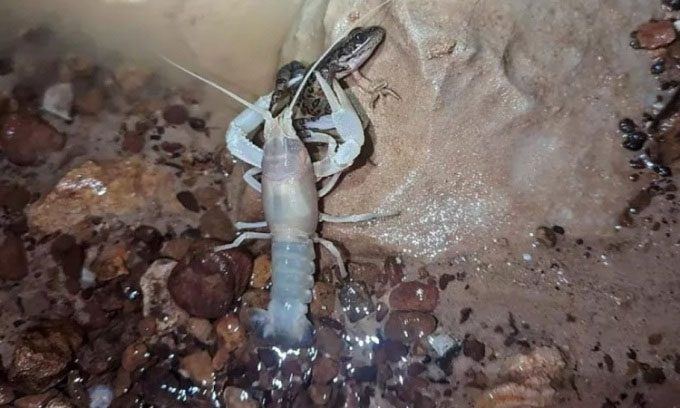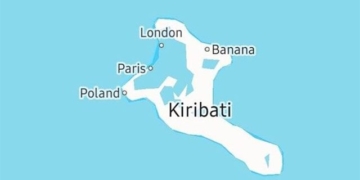Mammoth Cave National Park in Kentucky shared a photo on March 3 of a crayfish feasting on a frog in the cave.

Frog becomes prey to crayfish after heavy rain. (Photo: Mammoth Cave National Park).
The crayfish belongs to the species Orconectes pellucidus, which spends most of its time in the underground streams that flow through the park’s tunnel system. Encountering a frog in the presence of such cave-dwelling creatures is quite unusual. According to park management, while frogs typically reside near cave entrances and sometimes in nearby larger streams, they do not frequently share the same area as the O. pellucidus crayfish.
However, after a winter storm left thousands in Kentucky without power, the two species came into contact. The extended period of heavy rain can wash surface-dwelling creatures like frogs, mice, and other small animals into the cave system. They may die from starvation, unable to return to their natural habitat, or encounter the crayfish, park management explained.
Mammoth Cave National Park is home to the longest cave system in the world, with many sections exceeding 676 kilometers. The area spans 21,384 hectares and is a UNESCO World Heritage Site. It is home to cave-dwelling animals, with over 130 species identified to date. Cave crayfish have evolved unusual physical traits to adapt to life in a lightless environment. They lack eyes and pigmentation, features that could waste energy.
There are over 500 species of crayfish worldwide, with more than half found in North America. They are closely related to lobsters and are mostly sandy yellow, green, red, or brown. Consequently, cave crayfish are very unusual in terms of pigmentation. In addition to this species, Mammoth Cave is also home to endangered species such as blind cave fish and Kentucky cave shrimp.





















































